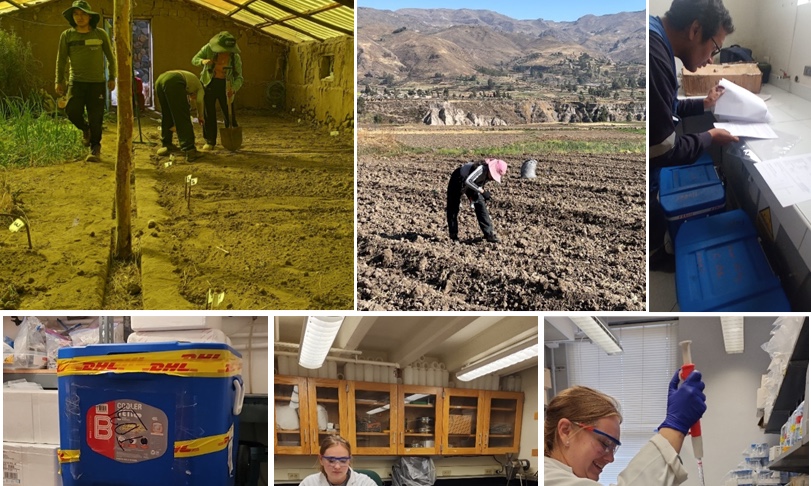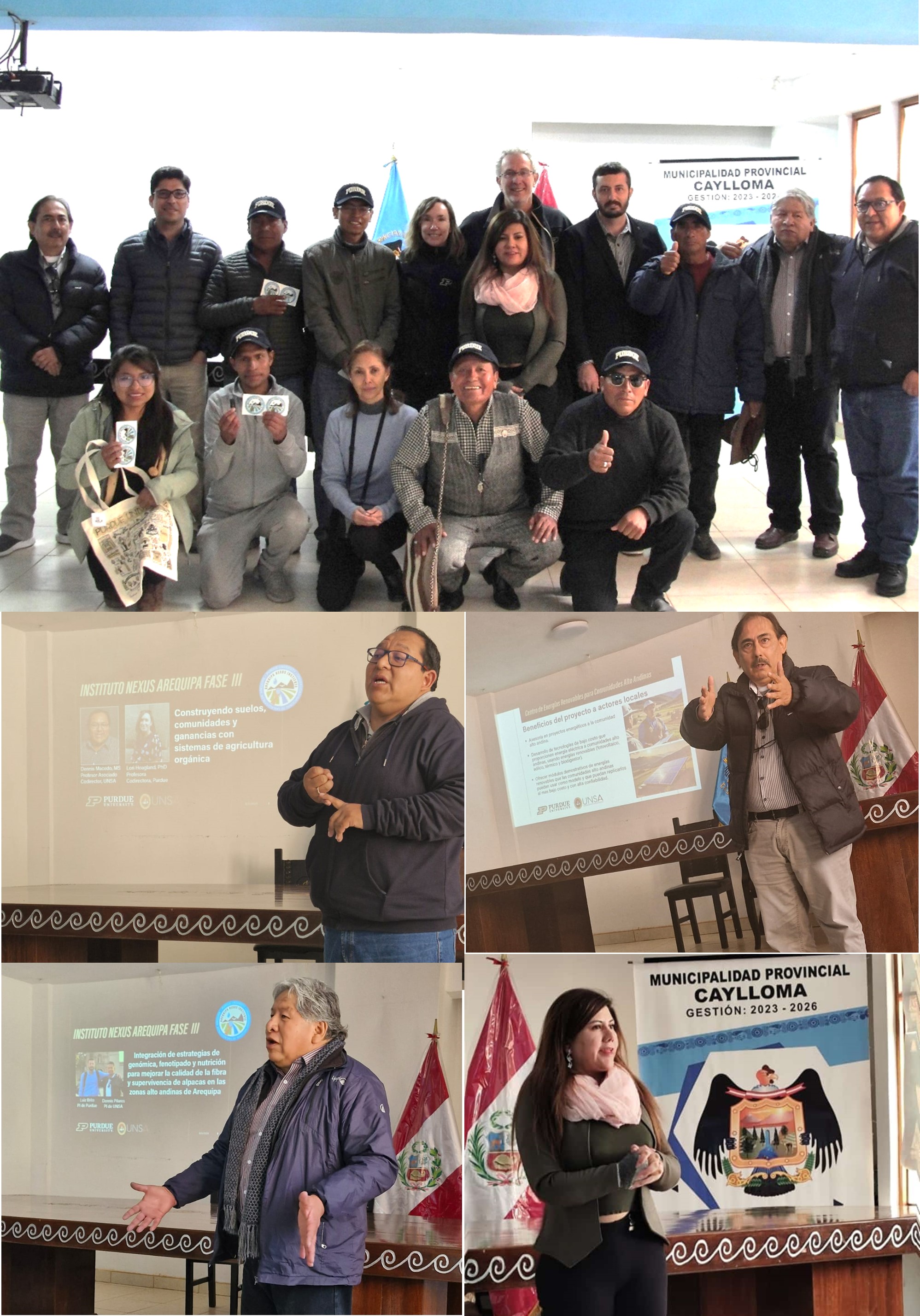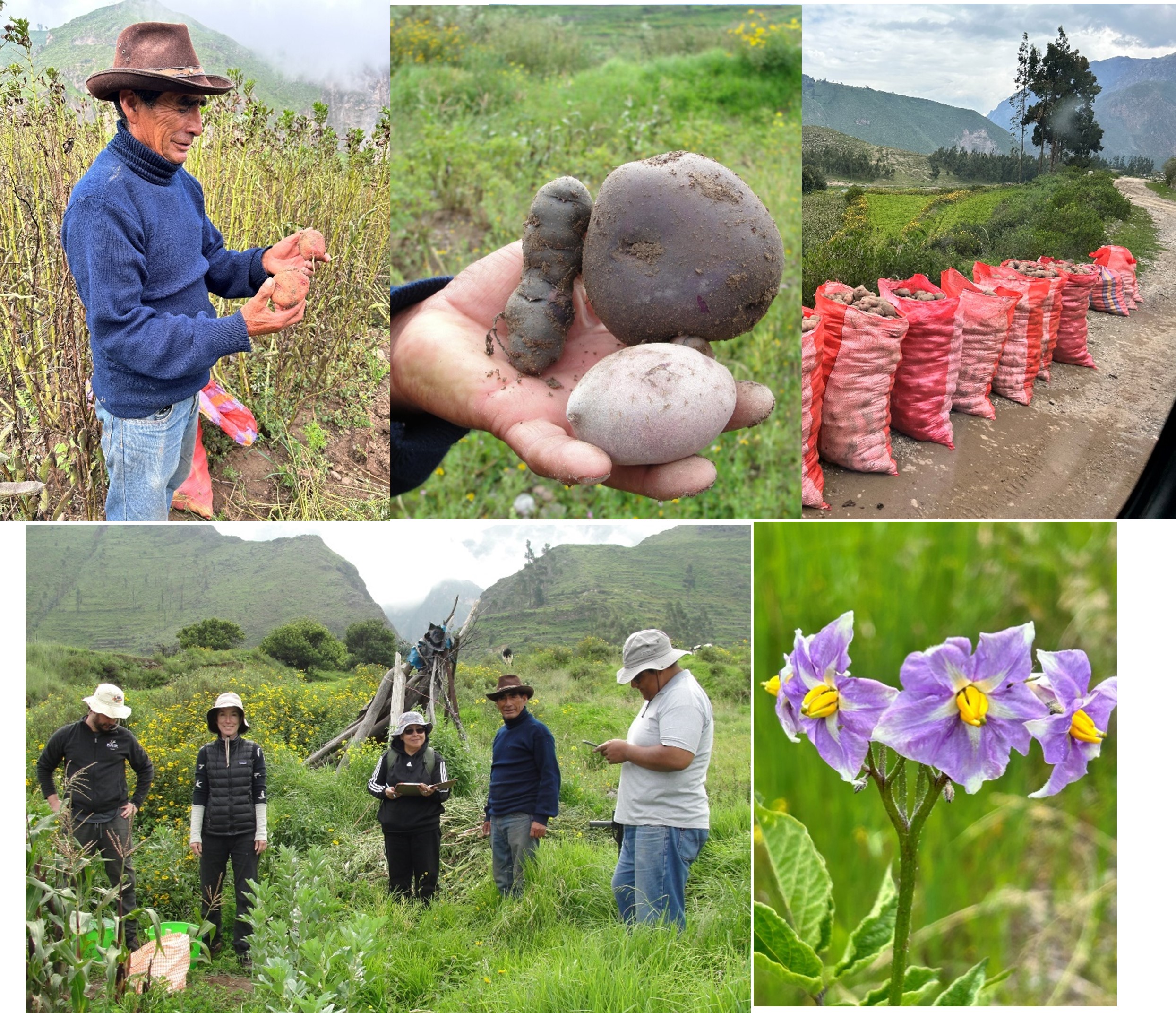Past News
Camelids Project Launches its Technical Seminar on Alpaca Fiber in Arequipa

March 31, 2025
Engineer Carmen Silva Villavicencio and Veterinarian Eder Armando Fernández giving a lecture on the importance of the quality of alpaca fiber to UNSA professors and students, and alpaca producers from the Colca Valley. Photos credit: Alejandra Toro.
Read More about "Camelids Project Launches its Technical Seminar on Alpaca Fiber in Arequipa"
Tourism Foundations Workshops Commence in the Colca Valley

March 10, 2025
Members of the Nexus ‘Regenerative Tourism’ Project during the first two workshops in the Colca Valley. First row picture: Lady Concha, the workshops’ facilitator and instructor, engaging participants in practical exercises and group work. Second row pictures: participants actively working in groups to apply learned tools to their own entrepreneurial ideas. Photos credits: Beatriz Roldan and Katherine Pivaral
Read More about "Tourism Foundations Workshops Commence in the Colca Valley"
Soil samples arrive in the United States for processing

February 24, 2025
Members of the Nexus Organic Farming Systems project collecting and processing soil samples from the Colca Valley. First row pictures: UNSA students collecting soil samples from fitotoldos and on-farm research trials, which later were loaded into coolers in preparation for shipment to the U.S. Second row pictures: Soil samples arrive in the U.S. after their long journey across continents and through customs. PhD student Mine van der Berg sorting through the soil samples and conducting enzymatic analyses to quantify the capacity of the soils to meet crop nutrient needs. Photo credits: project members.
Read More about "Soil samples arrive in the United States for processing"
On-farm research trials to aid in the transition to organic farming systems

February 14, 2025
Prepping plots and applying soil amendments on on-farm research trials on five farms within the Colca River Valley. Left and center: prepping a plot in two farms in Yanque. Right: applying soil amendments in Madrigal. Photos credit: Lori Hoagland.
Read More about "On-farm research trials to aid in the transition to organic farming systems"
Learning about ‘Fitotoldos’ in the Colca Valley

February 7, 2025
Mrs. Sonia from Sibayo shows her organic production of broccoli, lettuce, chard and carrots. Thanks to the advice of her Agronomist son, she has been able to grow and properly manage clean vegetables for her own consumption. Photo credit: Gary Burniske.
Read More about "Learning about ‘Fitotoldos’ in the Colca Valley"
Colca Valley Farmers receive detailed soil test reports to help them improve their farming practices

February 4, 2025
Team of the Nexus ‘Organic Farming Systems (OFS)’ Project delivering detailed soil test reports to farmers in Yanque (Colca Valley). Photos credit: Lori Hoagland
Understanding Agricultural Practices of Colca Valley Farmers

January 27, 2025
Members of the Nexus ‘Organic Farming Systems’ Project, Drs. Julia Bello-Bravo and Rosa Cossio, during two focus group exercises conducted in Madrigal with a group of ‘women’ and ‘senior’ farmers. Photos credit: Rosa Cossio and Julia Bello-Bravo.
Read More about "Understanding Agricultural Practices of Colca Valley Farmers"
‘Camelids’ Project Helps Increase Capacity of Alpaca Producers in the Colca Valley

December 6, 2024
Nexus postdoctoral researcher Alejandra Toro explaining about keeping phenotypic data in the ‘record books’, and Wilfredo Cipira showing shearing techniques to participants in Sibayo. Photos credit: Gerardo Mamani and Luis Paulo Sousa.
Read More about "‘Camelids’ Project Helps Increase Capacity of Alpaca Producers in the Colca Valley"
Nexus First Advisory Board meeting: Engaging Colca Valley Stakeholders

August 22, 2024
Nexus projects’ PIs and local authorities from Sibayo, Yanque and Madrigal during the 1st Advisory Board meeting. From left to right (standing): Mauricio Postigo, Daniel Leon-Salas, Daniel Ninataype, Jose Andia, Lori Hoagland, Jonathon Day, Carmen Franco, Luiz Brito, Pablo Mauro Condori, Jose Flores, and Dennis Macedo. From left to right (sitting): Yulissa Chalco, Ronald Mamani, Rosa Cossio, Zacarias Ocsa, and Demetrio Velasquez. Below, UNSA PIs presenting activities and expected outcomes of their respective projects: Dennis Macedo (Organic Farming Systems), Mauricio Postigo (Renewable Energy), Jose Flores (Camelids), and Carmen Franco (Regenerative Tourism). Photos credit: Carmen Franco and Rosa Cossio
Read More about "Nexus First Advisory Board meeting: Engaging Colca Valley Stakeholders"
‘ORGANIC FARMING SYSTEMS’ PROJECT HELPING COLCA VALLEY POTATO FARMERS

May 30, 2024
Project team collecting soil samples and interviewing farmers in Madrigal district (Colca River Valley). Upper pictures depict Don Pablo showing native potato varieties grow in the area: ‘choclo negro’, ‘bola’, and ‘ojo azul’. Photos credit: Ada Martinez and Rosa Cossio.
Read More about "‘ORGANIC FARMING SYSTEMS’ PROJECT HELPING COLCA VALLEY POTATO FARMERS"

